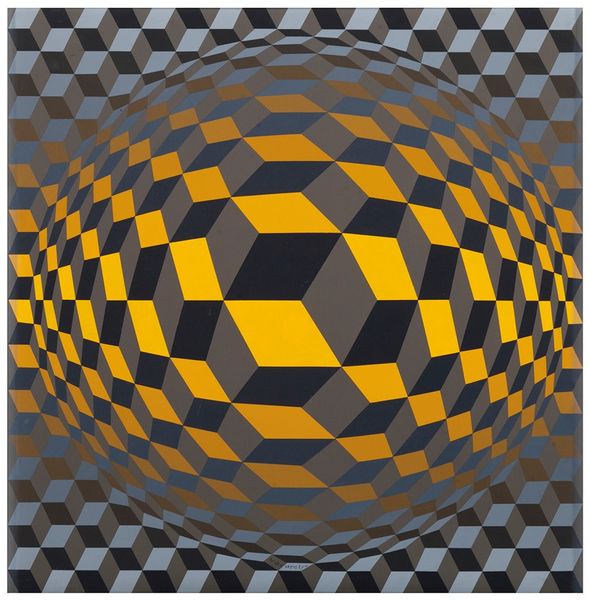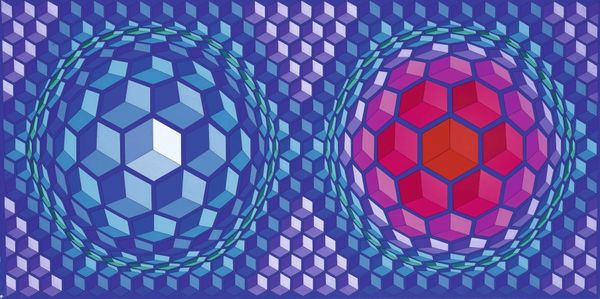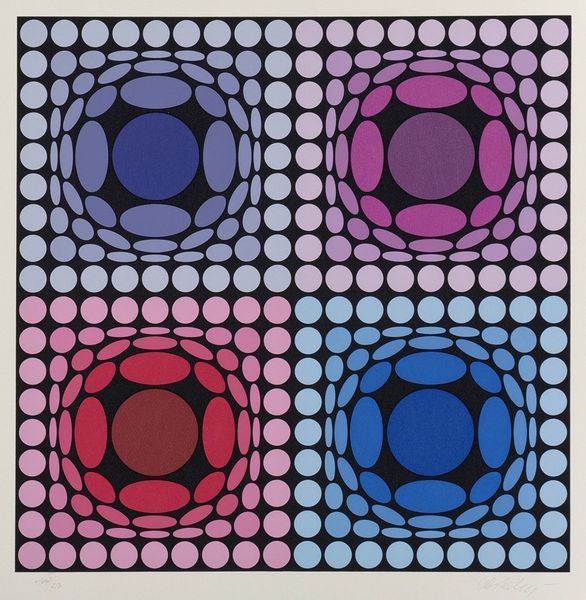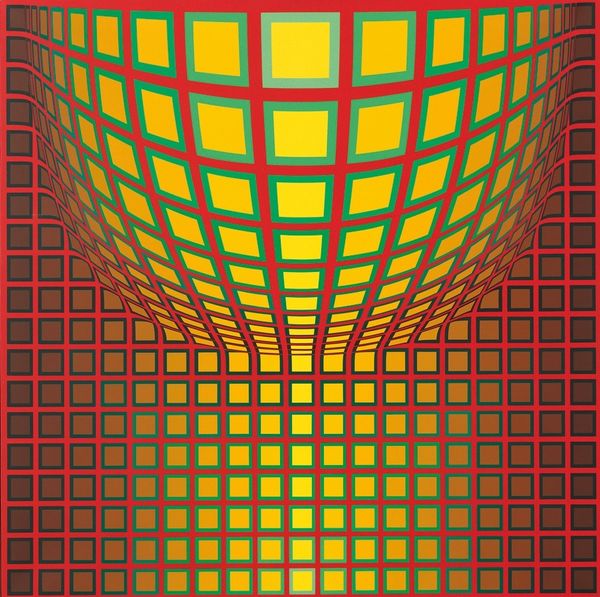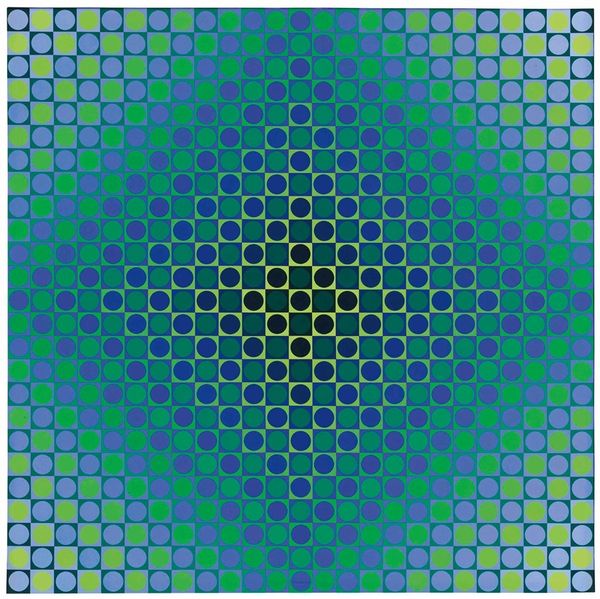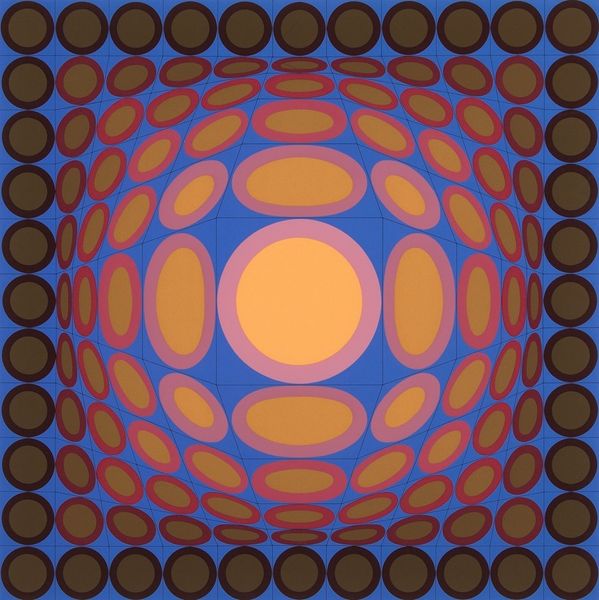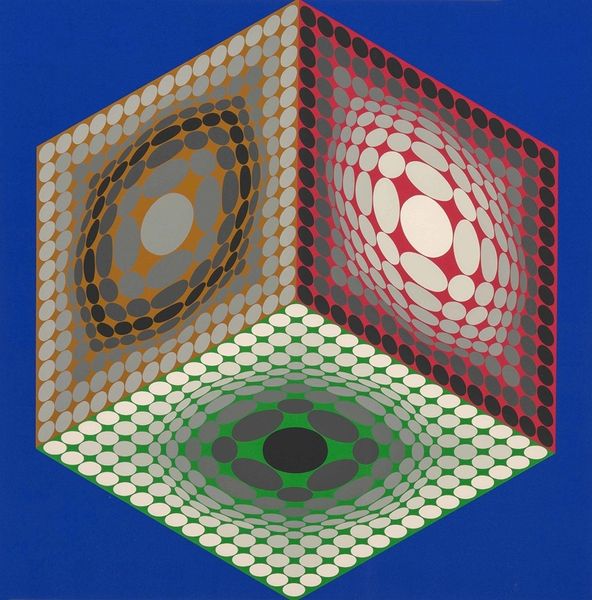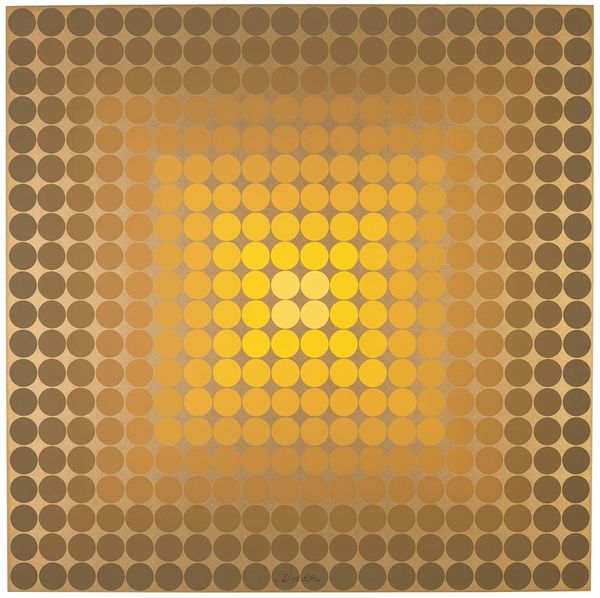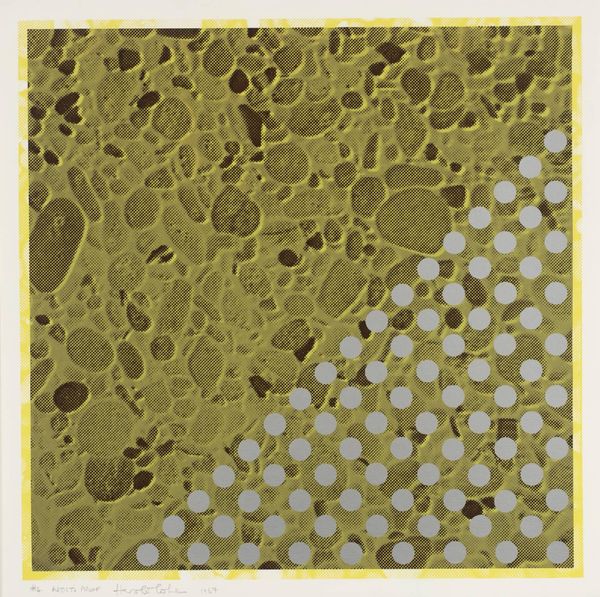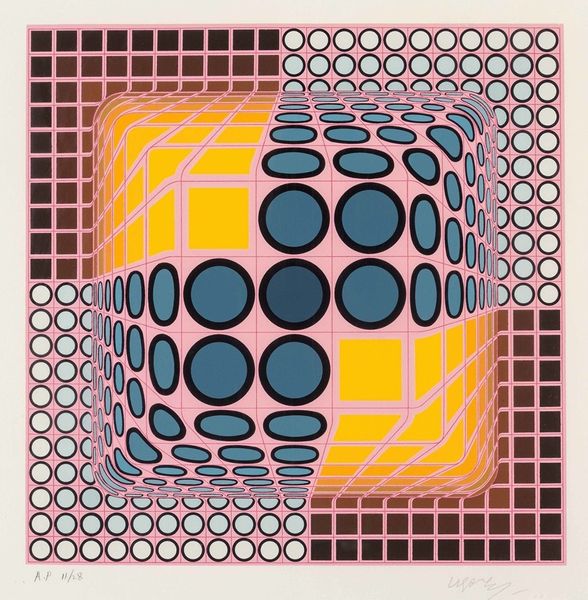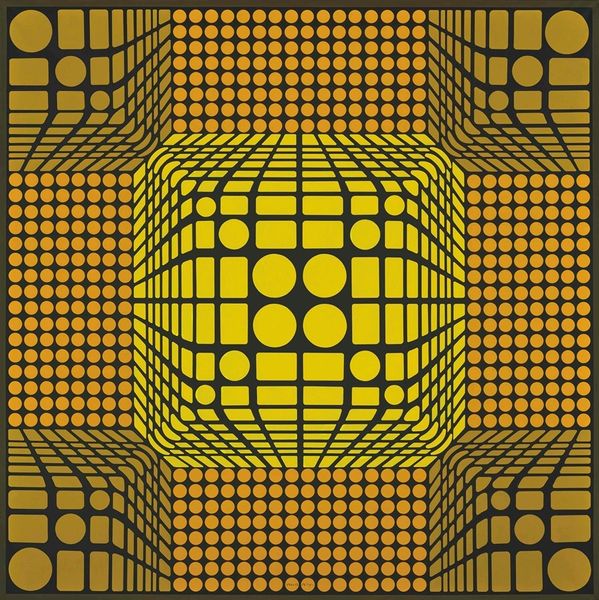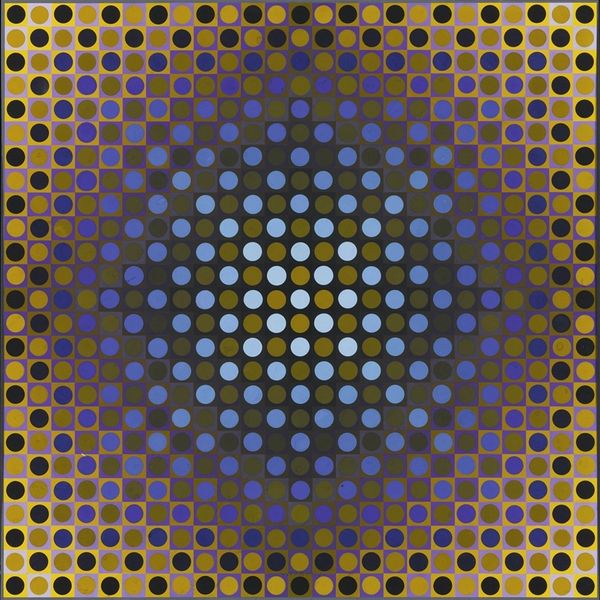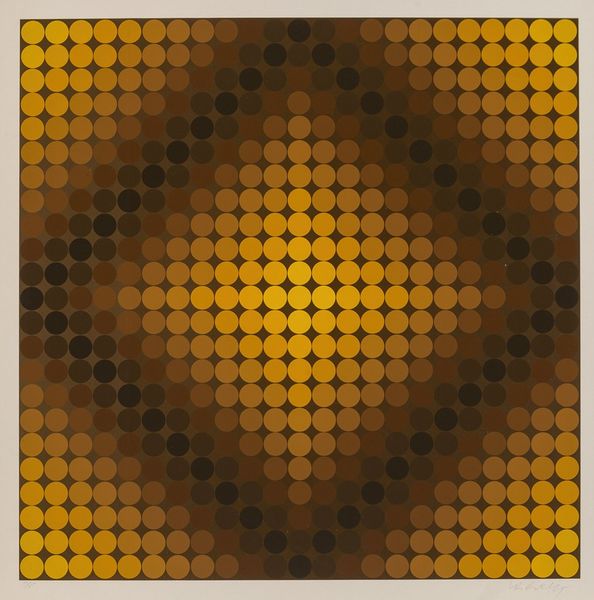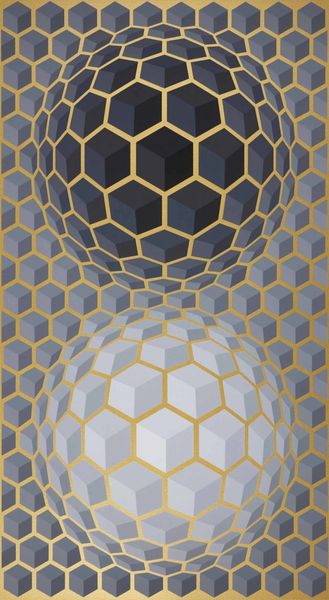
Copyright: Modern Artists: Artvee
Curator: Victor Vasarely's "Paris-Tokyo #2," created in 1980 using acrylic paint and print techniques, stands before us. What strikes you upon first seeing this, Editor? Editor: Well, instantly, that golden orb! It seems to pulse with a light of its own against that more subdued, geometrically rigid background. Almost unsettling, in a way. Curator: That unsettling sensation speaks volumes. Vasarely, a master of Op Art, intentionally crafts these illusions to engage our perception. This is a very particular, stylized play of figure and ground. Editor: Precisely! The geometric cube pattern that fills the space makes the object appear to either sink into the painting or lift right off of it! Tell me, in 1980, how was the viewing public receiving work like this? Curator: By that point, Vasarely had become an art world fixture. Remember, Op Art exploded in the mid-60s with "The Responsive Eye" exhibition. It brought a fresh approach to public engagement. What are they seeing? How are their brains reacting? Editor: It's like the bridge between high art and mass culture became a little bit easier to traverse in this era, because of people like Vasarely. It brings design into dialogue with what might typically be an inaccessible artistic movement. Curator: Yes, that's why, even now, his art can be used to reflect the shifting perceptions and sensory experiences in everyday life during those periods. What about the name then, "Paris-Tokyo"? Any theories why these places specifically? Editor: Well, thinking about Paris, maybe it has something to do with this type of pattern making entering the culture via haute couture? And Tokyo, a beacon of design and technology at the time? Curator: I would also imagine Vasarely recognized those cities as vital points in global dissemination of art, and a signal of a new networked world. I will say, looking at the orb itself—it is so solid in appearance, yet also appears like pure, unfettered light. Editor: You’re right. In this era where manufacturing seemed so soulless and uninspired, "Paris-Tokyo #2" brings joy to mechanical creation! Curator: This piece really captures Vasarely's knack for using pattern and color to push the boundaries of how we experience the visual world. Editor: It’s a testament to how art can play with our senses, challenge our perceptions, and even reflect on the cultural landscape itself. Thanks for that Iconographer insight!
Comments
No comments
Be the first to comment and join the conversation on the ultimate creative platform.
